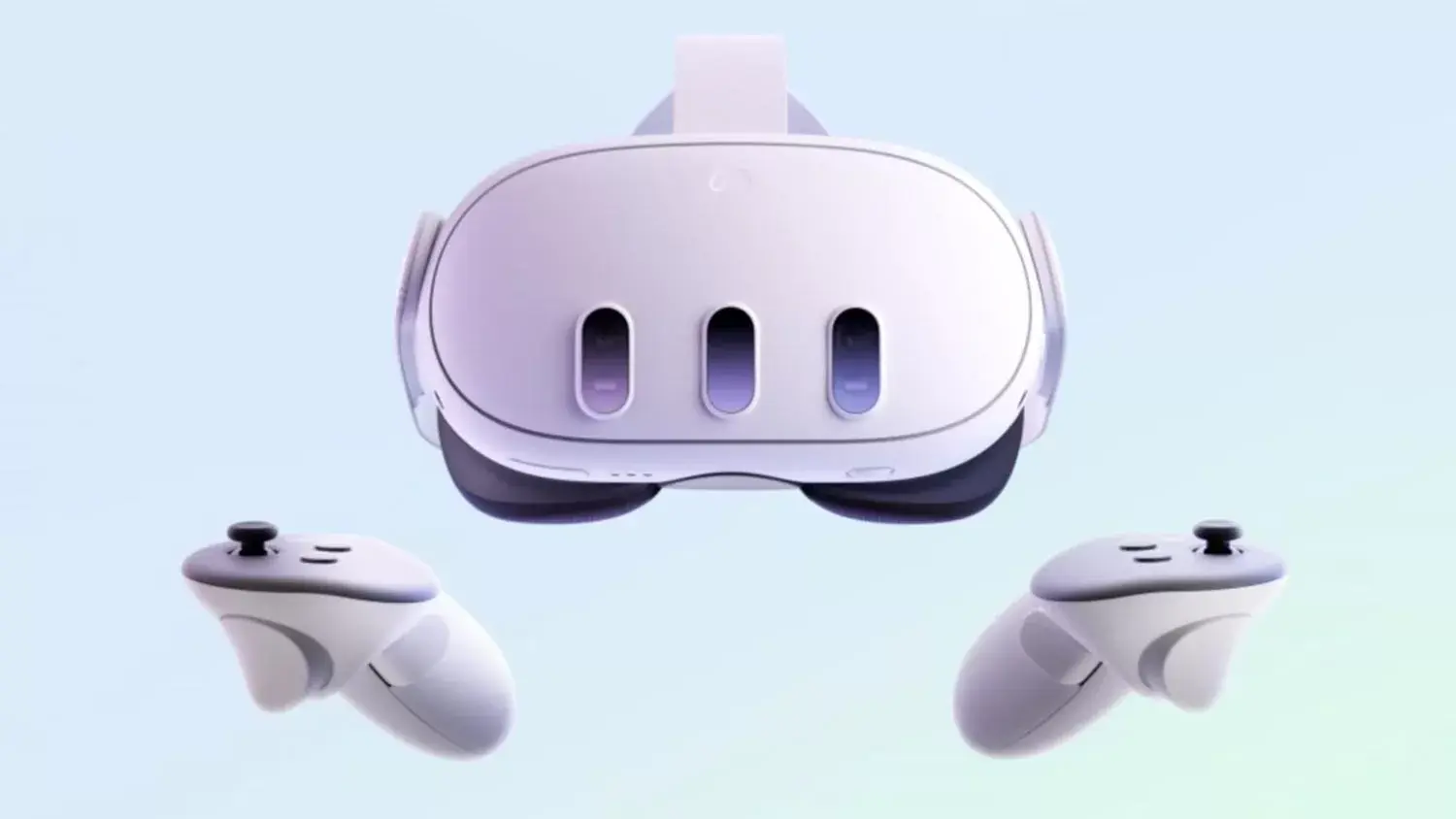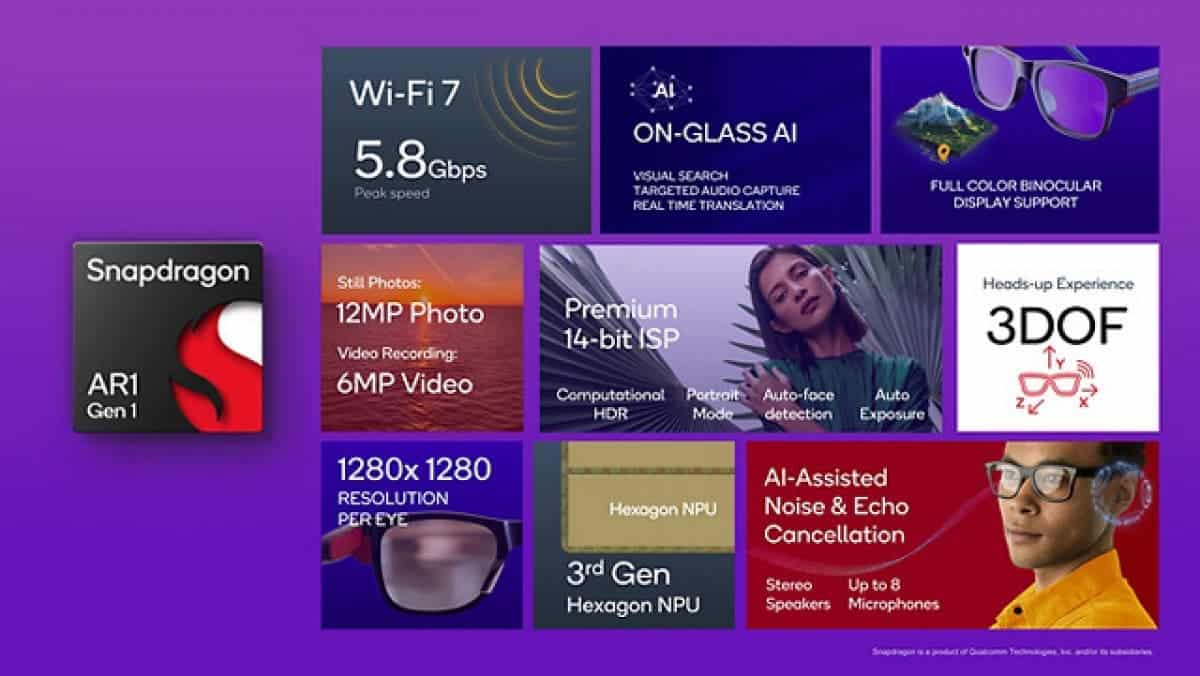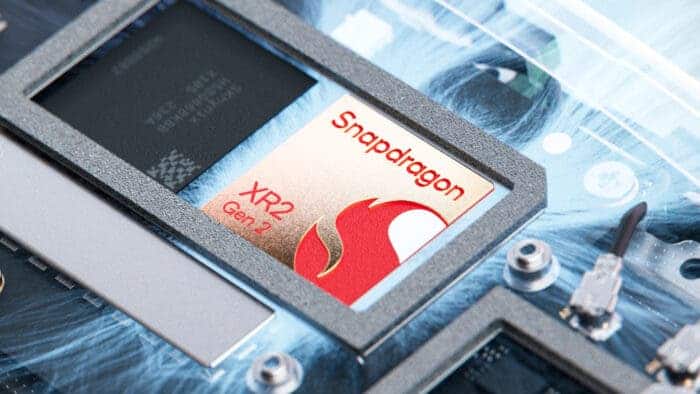Earlier this year, Samsung unveiled its plans to develop an XR headset during the Galaxy S23 launch event. This headset would mark the company’s first step into mixed reality, and it’s a collaborative effort with Google and Qualcomm. Notably, it will utilize Google’s platform and likely incorporate Qualcomm’s chip. Possibly the Snapdragon XR2 Gen 2, which Qualcomm announced recently.
The Qualcomm XR2 Gen 2 Chip 
The Snapdragon XR2 Gen 2 is Qualcomm’s flagship processor designed to power AR (Augmented Reality), MR (Mixed Reality), and VR (Virtual Reality) headsets. It was developed in partnership with Meta and has already been featured in Meta’s Quest 3 mixed-reality headset. Meta introduced the Quest 3 earlier this week. This upgraded chip boasts substantial improvements over its predecessor, the Snapdragon XR2 Gen 1, launched last year.
Some of the key enhancements include a 2.5x faster GPU and 8x faster AI processing. This offers a significant boost in performance. Additionally, it supports displays with resolutions of up to 3,000 x 3,000 pixels per eye, delivering crisp and immersive visuals. It also offers improved textures, higher frame rates, and reduced jitter, providing a superior overall experience. Importantly, it incorporates a 50% more power-efficient GPU. With this, there is no need for an external battery pack, as seen in Apple’s Vision Pro headset.
For AR and MR headsets, the Snapdragon XR2 Gen 2 supports up to 10 concurrent cameras and sensors. It can also switch seamlessly between see-through modes in just 12 milliseconds. This enables a more realistic transition between AR, MR, and VR modes and allows for thinner, lighter, and more comfortable headsets, ideal for extended use. The chip also offers faster connectivity with Wi-Fi 7 and Bluetooth 5.3.
Availability of the Qualcomm XR2 Gen 2 Chip 
Qualcomm has revealed that AR and MR headsets powered by the Snapdragon XR2 Gen 2 will hit the market in early 2024. While it’s possible that Samsung might consider using this chip for its XR headset, there’s also speculation that Samsung could opt for an exclusive chip tailored to its specific mixed-reality requirements.
In addition to the Snapdragon XR2 Gen 2, Qualcomm introduced the Snapdragon AR1 Gen 1, aimed at AR glasses. This chip brings enhancements such as on-device AI processing, improved noise cancellation, and superior image quality. It supports up to 12MP cameras (6MP for video) and up to eight microphones, enhancing camera quality, visuals, and audio quality. The on-board cameras support features like autofocus, auto-exposure, computational HDR, and portrait mode.
With a resolution of 1,280 x 1,280 pixels per eye, the Snapdragon AR1 Gen 1 provides clear visuals and incorporates on-glass AI processing for capabilities like visual search and real-time language translation. It also features Wi-Fi 7 for faster connectivity when paired with other devices.






Overall, earbuds have revolutionized the way we consume audio content. They offer a level of portability and convenience that traditional headphones can’t match
Rocking my eWave Wireless neckbands everywhere I go. They’re lightweight, comfortable, and the battery lasts all day. 👍 #eWaveNeckbands #WirelessAudio
Rocking my eWave Wireless neckbands everywhere I go. They’re lightweight, comfortable, and the battery lasts all day. 👍 #eWaveNeckbands #WirelessAudio
eWave’s neckbands are a perfect blend of style and functionality. No more dealing with tangled cords—just pure, wireless enjoyment. 🎵 #eWaveNeckbands #AudioFreedom
eWave’s neckbands are a perfect blend of style and functionality. No more dealing with tangled cords—just pure, wireless enjoyment. 🎵 #eWaveNeckbands #AudioFreedomhttps://ewave.co.in/product-category/neckbands/